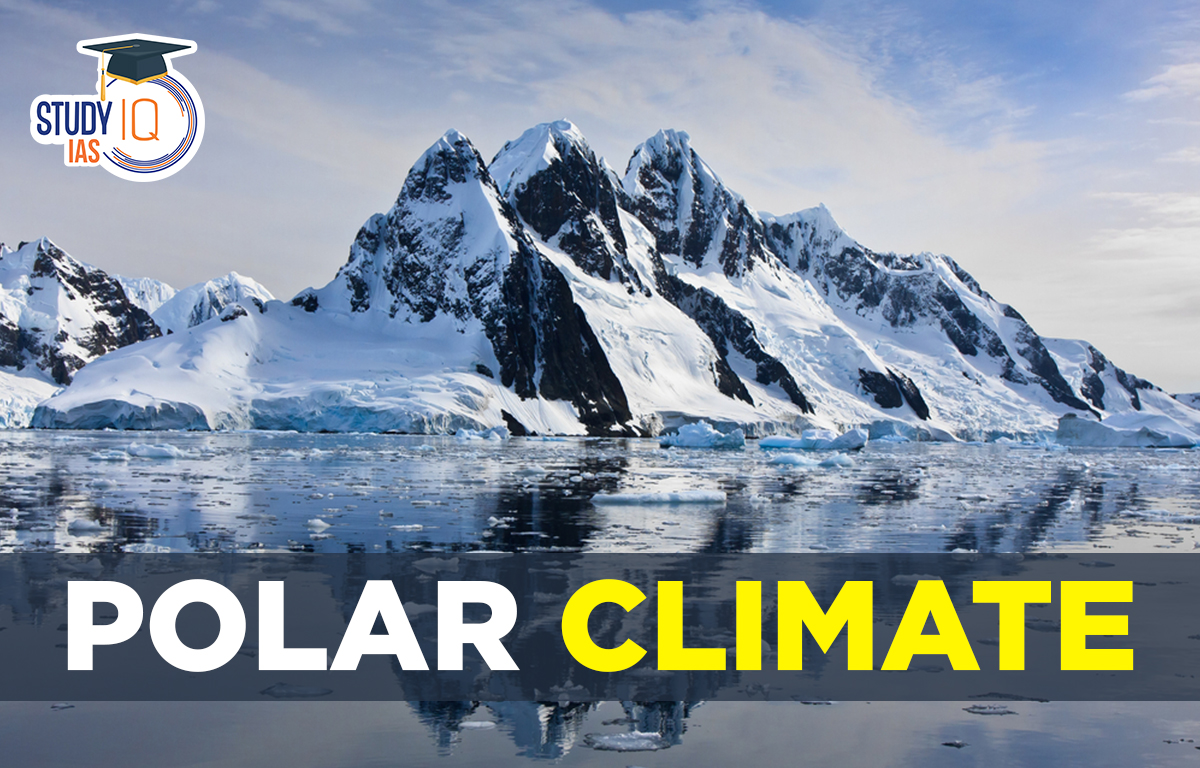Table of Contents
Polar Climate
A polar climate has cool summers and extremely cold winters resulting in treeless tundra, glaciers, or a permanent or semi-permanent layer of ice. The Köppen climate classification assigns it the letter E. Here are the complete details about the Polar Climate in this article, which is included in the UPSC IAS Exam’s Geography Syllabus.
Read More: Climatology
Polar Climate Distribution
Read More: Equatorial Climate Region
Polar Climatic Conditions
Long, cold winters, with average annual temperatures well below freezing. Polar regions are frequently windy, with little precipitation. Polar landscapes are covered in permanent ice caps.
Read More: Tropical Climate
Polar Climate Temperature
| Polar Temperature |
|
Read More: Steppe Climate
Polar Climate Precipitation & Snow
Snow is a type of winter rain that builds up and is cleared away by snowstorms. Snow can fall in different forms like big flakes or tiny crystals. In cold polar areas there is not much evaporation or moisture, so regular rain doesn’t happen. Most precipitation here is sleet or snow, with little to no rain.
Read More: Precipitation
Polar Climate Natural Vegetation
| Polar Vegetation |
|
Read More: Natural Vegetation of India
Polar Climate Life and Economy
The coast is where most human activity occurs in terms of both life and economy. Only ethnic groups like the Samoyeds, Lapps, and Eskimos reside here. Most of the tundra’s human activity is restricted to the coast. People lead somewhat itinerant lives. The Eskimos live in Greenland, Alaska, and northern Canada. They spend the winter months in small igloos. They eat fish, seals, walruses, and polar bears for food. Nowadays, guns are employed to locate animals instead of the more conventional harpoons.
Read More: British Type of Climate
Polar/Arctic Region Development
| Arctic region |
|
Read More: China Type Climate
Arctic Region/Polar Region Significance
India, as one of the thirteen countries with Arctic Council Observer status, has a significant stake in the region.Mineral and oil resources are abundant in the area. The fact that so many maritime routes pass through the Arctic region adds to its importance. In addition to affecting the availability of mineral and hydrocarbon resources, the negative consequences of climate change are also altering international trade lanes.
Read More: Siberian Type Climate
Polar Climate UPSC
India has strategic, commercial, environmental, and scientific interests in the Arctic. For this reason, India has maintained a consistent and extensive relationship with the Arctic over the years. The goal of India’s Arctic Policy is to get the nation ready for a time when the greatest problems facing humanity, like climate change, maybe successfully solved.
It may be possible to improve the country’s strategy by creating a specialised expert committee to develop, monitor, steer, implement, and assess India’s Arctic policy.
Read More: Types of Rainfall


 Important Lakes of India, State wise and...
Important Lakes of India, State wise and...
 Buddhism History, Origin, Sect, Councils...
Buddhism History, Origin, Sect, Councils...
 Andaman and Nicobar Islands, History, Cl...
Andaman and Nicobar Islands, History, Cl...





















